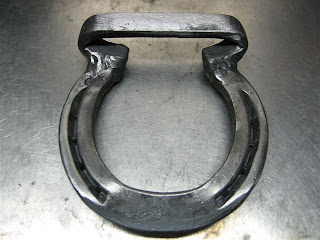The image above consists of many 2-3cm chondroids that were removed one by one from a horse's guttural pouch. This horse was a young filly at a sale barn that contracted the dreaded strangles infection (see my previous post concerning strangles in horses) yet continued to have a purulent discharge from her nasal passage for weeks. Unfortunately, the filly was not scoped to determine if the original infection resulted in abscessation within the guttural pouch. Over time, the purulent debris in the guttural pouch becomes hardened and resembles smooth, stone like objects known as chondroids. These objects are basically hardened pus that are typically filled with the bacteria that causes strangles in horses.
The above images consists of the view through the endoscope into the guttural pouch revealing the lodged chondroids. There are two ways to remove these structures: 1) a surgical approach or 2) through an endoscope. The surgical approach is probably easier in the long run but there are more risks involving sensitive structures such as cranial nerves and large blood vessels. The endoscopic approach can be very slow considering that each chondroid is removed via a snare as imaged below. If these chondroids are not removed, the horse may likely remain "infectious" to other horses and will persist with a purulent nasal discharge. Most important message to you is that if your horse has a persistent nasal discharge, I strongly recommend a through endoscopic exam which MUST include evaluation of both guttural pouches!!













